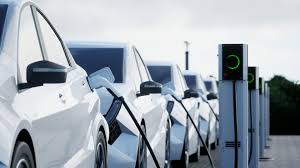
The global electric vehicle industry is entering a pivotal phase as a wave of competing battery technologies promises to reshape production, supply chains, and vehicle performance. Automakers and startups are racing to develop alternatives to conventional lithium-ion batteries, exploring chemistries ranging from sodium-ion and lithium-sulfur to solid-state designs. The goal is clear: reduce reliance on scarce critical minerals, lower costs, and deliver safer, higher-performance batteries for the next generation of EVs.
Diversifying Beyond Lithium-Ion
Lithium-ion batteries dominate today’s electric vehicle market, powering everything from smartphones to premium EVs. Within this category, two main variants are widely used: nickel-manganese-cobalt (NMC) and lithium iron phosphate (LFP). NMC batteries offer high energy density, making them suitable for long-range and high-performance vehicles, but rely heavily on cobalt, mostly mined under challenging ethical and strategic conditions. LFP batteries eliminate the need for cobalt, are more affordable, and are increasingly popular in smaller EVs, though they trade off some energy density.
While lithium-ion remains central, industry players are exploring alternatives to reduce dependency on limited resources and improve sustainability. Sodium-ion batteries, for example, replace lithium, nickel, and cobalt with more abundant elements such as sodium, iron, manganese, and aluminum. These batteries are non-flammable and capable of enduring tens of thousands of recharge cycles, significantly higher than current lithium-ion cells. The challenge remains their lower energy density and limited current supply, but research and pilot production projects are steadily advancing.
Lithium-sulfur technology offers another transformative potential. Backed by major automakers and startups, it promises more than double the energy density of lithium-ion, eliminates reliance on cobalt, nickel, and manganese, and can be produced in North America and Europe, reducing supply chain vulnerability. Solid-state batteries, replacing liquid electrolytes with polymer or ceramic materials, similarly aim to deliver higher energy density, lighter weight, and greater safety. However, large-scale deployment is still several years away.
Early-Stage and Alternative Chemistries
In addition to sodium-ion and lithium-sulfur, other experimental chemistries are being explored. Lithium metal polymer (LMP) technology, which uses a dry capacitor principle, has found limited application in stationary storage and public transport but requires preheating and careful temperature maintenance. Lithium-nickel-manganese-oxide (LNMO) batteries are another emerging option, eliminating cobalt while promising energy density comparable to NMC and fast charging capabilities.
Older battery types, such as nickel-metal hydride (Ni-MH), nickel-cadmium (Ni-Cd), and lead-acid, remain in limited use for hybrid vehicles, starters, and low-voltage applications. While these chemistries are inexpensive and durable under extreme conditions, they cannot compete with the energy density and efficiency of newer technologies, and thus are gradually being phased out in mainstream EV applications.
Sodium-nickel-chloride batteries, previously used in niche fleets, illustrate the challenges of scaling alternative chemistries. They are smaller and compatible with existing vehicles without major conversions, but offer limited top speed and range. Meanwhile, lithium-metal polymer systems are valued for industrial simplicity and stationary storage but have yet to achieve mainstream vehicle deployment.
Implications for the EV Industry
The race among battery technologies is fundamentally reshaping the EV landscape. China currently dominates global battery cell production and the processing of key raw materials, giving it a strategic edge. By diversifying chemistries and raw material sources, automakers aim to mitigate geopolitical risk and supply-chain bottlenecks.
Startups and traditional automakers alike are investing heavily in battery innovation, as performance, safety, and sustainability become increasingly critical to consumers and regulators. Fast-charging capabilities, non-flammability, longer lifecycle, and independence from scarce minerals are now core selling points. For instance, LNMO and sodium-ion batteries promise quick recharge and high cycle life, while lithium-sulfur and solid-state designs could redefine energy density benchmarks.
The proliferation of battery types also affects vehicle design, manufacturing, and market segmentation. High-density NMC cells remain preferred for luxury and performance EVs, while LFP and sodium-ion batteries are emerging in cost-sensitive and urban mobility segments. Automakers must balance energy density, cost, safety, and supply chain stability when choosing battery platforms, influencing everything from vehicle range to total cost of ownership.
The development of alternative batteries also intersects with government policies and sustainability targets. Countries seeking to reduce reliance on imported lithium, cobalt, and nickel are investing in local production of alternative chemistries. Companies are similarly motivated by investor pressure to decouple from conflict minerals and reduce environmental impact.
The next decade is likely to see a diversification of battery technologies rather than a single winner. Lithium-ion will remain the backbone of the EV industry for now, but sodium-ion, lithium-sulfur, LNMO, and solid-state batteries are poised to capture increasing market share as production scales, performance improves, and cost declines.
Automakers and battery manufacturers are entering strategic partnerships to accelerate commercialization, while governments support research, subsidies, and supply-chain localization. This competition is expected to accelerate technological breakthroughs, ultimately leading to EVs that are more efficient, safer, and affordable.
For consumers, the benefits could include longer driving ranges, faster charging, and lower prices, while the industry gains resilience against geopolitical supply risks. The competitive landscape for EV batteries is shifting rapidly, and companies that can successfully navigate technology selection, scale production, and secure sustainable material sources will likely define the future of electric mobility.
The reshaping of the EV industry by competing battery technologies underscores a broader industrial transformation. The interplay of innovation, supply security, and environmental sustainability is driving a dynamic market where new chemistries could redefine vehicle capabilities and cost structures, shaping the trajectory of the global transition to electric transportation.
(Source:www.marketscreener.com)
Diversifying Beyond Lithium-Ion
Lithium-ion batteries dominate today’s electric vehicle market, powering everything from smartphones to premium EVs. Within this category, two main variants are widely used: nickel-manganese-cobalt (NMC) and lithium iron phosphate (LFP). NMC batteries offer high energy density, making them suitable for long-range and high-performance vehicles, but rely heavily on cobalt, mostly mined under challenging ethical and strategic conditions. LFP batteries eliminate the need for cobalt, are more affordable, and are increasingly popular in smaller EVs, though they trade off some energy density.
While lithium-ion remains central, industry players are exploring alternatives to reduce dependency on limited resources and improve sustainability. Sodium-ion batteries, for example, replace lithium, nickel, and cobalt with more abundant elements such as sodium, iron, manganese, and aluminum. These batteries are non-flammable and capable of enduring tens of thousands of recharge cycles, significantly higher than current lithium-ion cells. The challenge remains their lower energy density and limited current supply, but research and pilot production projects are steadily advancing.
Lithium-sulfur technology offers another transformative potential. Backed by major automakers and startups, it promises more than double the energy density of lithium-ion, eliminates reliance on cobalt, nickel, and manganese, and can be produced in North America and Europe, reducing supply chain vulnerability. Solid-state batteries, replacing liquid electrolytes with polymer or ceramic materials, similarly aim to deliver higher energy density, lighter weight, and greater safety. However, large-scale deployment is still several years away.
Early-Stage and Alternative Chemistries
In addition to sodium-ion and lithium-sulfur, other experimental chemistries are being explored. Lithium metal polymer (LMP) technology, which uses a dry capacitor principle, has found limited application in stationary storage and public transport but requires preheating and careful temperature maintenance. Lithium-nickel-manganese-oxide (LNMO) batteries are another emerging option, eliminating cobalt while promising energy density comparable to NMC and fast charging capabilities.
Older battery types, such as nickel-metal hydride (Ni-MH), nickel-cadmium (Ni-Cd), and lead-acid, remain in limited use for hybrid vehicles, starters, and low-voltage applications. While these chemistries are inexpensive and durable under extreme conditions, they cannot compete with the energy density and efficiency of newer technologies, and thus are gradually being phased out in mainstream EV applications.
Sodium-nickel-chloride batteries, previously used in niche fleets, illustrate the challenges of scaling alternative chemistries. They are smaller and compatible with existing vehicles without major conversions, but offer limited top speed and range. Meanwhile, lithium-metal polymer systems are valued for industrial simplicity and stationary storage but have yet to achieve mainstream vehicle deployment.
Implications for the EV Industry
The race among battery technologies is fundamentally reshaping the EV landscape. China currently dominates global battery cell production and the processing of key raw materials, giving it a strategic edge. By diversifying chemistries and raw material sources, automakers aim to mitigate geopolitical risk and supply-chain bottlenecks.
Startups and traditional automakers alike are investing heavily in battery innovation, as performance, safety, and sustainability become increasingly critical to consumers and regulators. Fast-charging capabilities, non-flammability, longer lifecycle, and independence from scarce minerals are now core selling points. For instance, LNMO and sodium-ion batteries promise quick recharge and high cycle life, while lithium-sulfur and solid-state designs could redefine energy density benchmarks.
The proliferation of battery types also affects vehicle design, manufacturing, and market segmentation. High-density NMC cells remain preferred for luxury and performance EVs, while LFP and sodium-ion batteries are emerging in cost-sensitive and urban mobility segments. Automakers must balance energy density, cost, safety, and supply chain stability when choosing battery platforms, influencing everything from vehicle range to total cost of ownership.
The development of alternative batteries also intersects with government policies and sustainability targets. Countries seeking to reduce reliance on imported lithium, cobalt, and nickel are investing in local production of alternative chemistries. Companies are similarly motivated by investor pressure to decouple from conflict minerals and reduce environmental impact.
The next decade is likely to see a diversification of battery technologies rather than a single winner. Lithium-ion will remain the backbone of the EV industry for now, but sodium-ion, lithium-sulfur, LNMO, and solid-state batteries are poised to capture increasing market share as production scales, performance improves, and cost declines.
Automakers and battery manufacturers are entering strategic partnerships to accelerate commercialization, while governments support research, subsidies, and supply-chain localization. This competition is expected to accelerate technological breakthroughs, ultimately leading to EVs that are more efficient, safer, and affordable.
For consumers, the benefits could include longer driving ranges, faster charging, and lower prices, while the industry gains resilience against geopolitical supply risks. The competitive landscape for EV batteries is shifting rapidly, and companies that can successfully navigate technology selection, scale production, and secure sustainable material sources will likely define the future of electric mobility.
The reshaping of the EV industry by competing battery technologies underscores a broader industrial transformation. The interplay of innovation, supply security, and environmental sustainability is driving a dynamic market where new chemistries could redefine vehicle capabilities and cost structures, shaping the trajectory of the global transition to electric transportation.
(Source:www.marketscreener.com)





